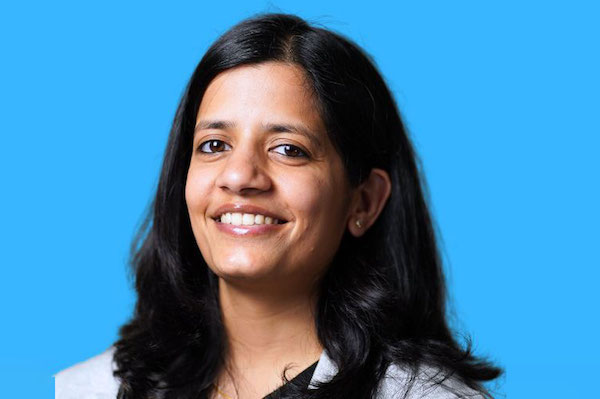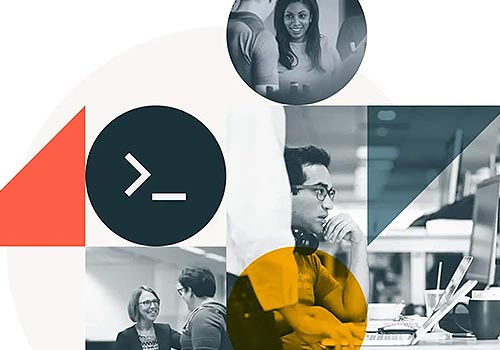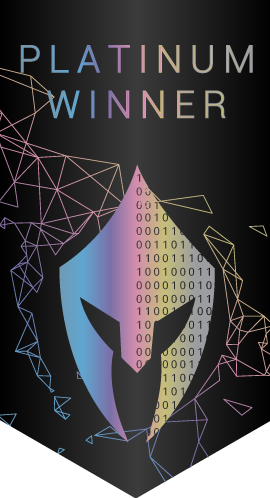
Interview
Ridhima Gupta
United States
Ridhima Gupta is a lead product designer for AI at Databricks, focusing on accessible AI tools for everyone. Previously at Tableau, Amazon, and Juniper, she was a design lead, simplifying complex domains. She enjoys mentoring young designers and start-ups.
1 Please give us a brief bio of yourself and your background.
I am Ridhima Gupta and I'm currently a lead product designer for AI at Databricks, where my focus is on designing tools for AI and making AI accessible to everyone. I've spent the last 6 years of my career designing for Data and AI and I'm passionate about helping see harness the power of data and use it to solve business problems. Most recently I've been at the forefront of designing applications using Large Language Models and building tools for LLMs at my current role. Before Databricks, I spent several years as a design lead at companies like Tableau, Amazon, and Juniper. I have a keen interest in simplifying complex domains and making them easy to understand for people. Apart from that, I also love mentoring young designers as well as start-ups to successfully build design teams from the ground up.
2 What made you become/why did you choose to become a digital designer/artist?
I was first introduced to digital design when I was a sophomore in Architecture school. A close friend was building a mobile app and needed help to create the design for the app. I ended up offering him help and designing the app. The app saw huge success internationally, and that was one of those moments when I realized the power of digital design in reaching millions of people worldwide.
3 Tell us more about your business/company, job profile, and what you do.
At Databricks, I currently design tools for data scientists, software engineers, and other business users to easily train, analyze, and deploy machine learning applications. It
4 What’s your favorite kind of digital design and why?
I have always been drawn to the world of data visualization and being able to visually explain a complex topic on a digital medium through simple illustrations. Both these areas fascinate me as they go into the meaning behind data/concepts and try to distill it into its essence.
5 To you, what makes a “good” design?
I strongly believe that good design is about crafting an experience that seamlessly weaves form and function, creating both feelings of purpose and delight for its users.
6 Describe your design style and its main characteristics.
My go-to design style is minimalistic and modern, with bold colors to evoke certain emotions.
7 Tell us about your design process.
My design process starts with immersing myself in the problem space. Talking with users, getting inspiration from related areas, and reading literature. I then usually go on to draw out various design concepts trying to solve that problem, but also keeping in mind aesthetics. Depending on the design, I would create various prototyping techniques such as physical prototypes or digital ones, and then test out my concepts with real users.
8 Where do you draw inspiration from?
I draw inspiration from many folks in the digital design, architecture, and business world. Some of them who have deeply affected my life are: Dieter Rams (for articulating principles of good design) Andrew Ng (for teaching ML and AI to the world in the simplest way possible) Le Corbusier (for designing the beautiful city I grew up in) Steve Jobs (for bringing design to the forefront in shaping technology products) Paul Rand (for pioneering the language of visual communication) Walt Disney (for his creativity, grit, and vision)
9 What current trends in digital design (or really anything digital related) are you most excited about?
I
10 Congratulations! As the winner of the 2023 Vega Awards, what does it mean to you and your company and team to receive this award distinction?
It
11 Can you explain a bit about the winning work you entered into the 2023 Vega Awards, and why you chose to enter this project?
Databricks ML Experiment Tracking is a tool that helps Data Scientists train and compare various Machine Learning models, to figure out the best model they want to deploy to production. I chose this project because of the complex domain of the project and my and my team
12 What was the biggest challenge with this project?
The biggest challenge in this project was understanding the user's complex workflow through user research and observing the user
13 How has winning an Award developed your practice/career?
Winning a prestigious award such as the Vega Design Award has certainly brought more eyes to my work and helped in providing validation to the effort that me and my team put into this project. We
14 What are your top three (3) favorite things about the digital industry?
While I do enjoy most mediums of design, a few things about digital design give designers a lot of advantages: 1) Digital design is continuously evolving and digital products are now shaping how most work gets done in the world 2) Opportunity to reach a wide audience very easily, which can be a challenge in more physical mediums of design. 3) Opportunity to get immediate feedback on your work
15 What makes your country specifically, unique in the digital industry?
I originally come from India and have been living in the US for the last 9 years. Having lived in both cultures, I
16 Where do you see the evolution of digital industry going over the next 5-10 years?
With the rise of AI and AI applications becoming more powerful every few months, I can imagine a world where more dangerous digital work gets taken care of by AI agents, and more creative, persuasive, and strategic work is done by humans. I think we
17 If you were a student entering this industry or an aspiring Vega Award submitter, what advice would you give them?
Focus on creating something that people want and try to create something that you
18 What resources would you recommend to someone who wants to improve their skills in the digital industry?
I would suggest keeping an open eye on everything around you. If you notice yourself liking something, take a moment to observe what you like about it and try to break it down. The biggest downfall of a designer is when they stop observing the world around them. I would also recommend reading and subscribing to product updates, and design newsletters to keep up-to-date on the latest developments in the space. Lastly, I
19 Tell us something you have never told anyone else.
When I was in middle school, after learning about how mirrors can be used to generate electricity, I wanted to
20 Who has inspired you in your life and why?
My mother has been the biggest inspiration in my life for her grit and positive attitude in any adversity. Apart from that, I
21 What is your key to success? Any parting words of wisdom?
Operate with a curious mind and give your 100% in everything you do. When designing, try to immerse yourself in the problem as much as you can and explore several options before arriving at your solution.
22 Do you have anything else you would like to add to the interview?
If you're looking to seek advice on breaking into design or navigating your career as a designer, feel free to reach out to me (Linkedin: @ridhimagupta26)

